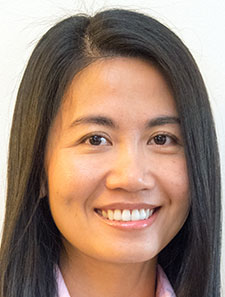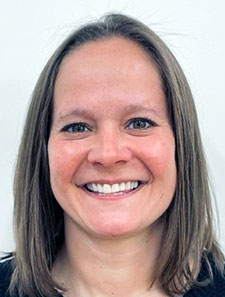 Everyone knows the concept of hospital at home care.
Everyone knows the concept of hospital at home care.
It’s institutional-level medical treatment delivered in the confines of a Cape Cod or a two-bedroom apartment, either in person or through telemedicine. What fewer practitioners know, as the concept continues to grow, is how best to structure said care. That’s where SHM’s Hospital at Home Special Interest Group steps in to help.

Dr. Truong
“The whole goal is, we want to bring this model of care to the clinicians,” said SIG vice chair Tuyet-Trinh “Trini” Truong, MD, FACP. “We truly believe in this high-value model of care and want to see it expand further by bringing it to the wider medical community. And there’s no better clinical community that would have the potential to accelerate this model forward than SHM because we, hospitalists, are forward thinkers, change makers, and innovators.”
Dr. Truong, chief medical officer of Mount Sinai at Home for Mount Sinai Health System in New York, says the goal is also to recruit more people to the model.
“We want people to be aware, but also to have this model of care at their institution,” she said. “And a lot more. It’s a community for all of us to learn from each other.”

Dr. Murphy
SIG chair Stephanie Murphy, DO, FHM, said that education around the concept is particularly important as hospitals at home evolve.
“It’s not necessarily new skills as much as it’s evolution and changing of a skillset that many hospitalists already have,” she said. “You’re talking about the nuance of taking acute care into the home, which I think is a real opportunity for patients, of course, because they love the experience. For practitioners, it gives us the opportunity to meet these patients in a different way and have more meaningful interactions with them. I think that training and understanding allow the physicians and the advanced practice practitioners practicing in the model to really get that full experience if you will.”
Dr. Truong adds that earlier-career physicians are already embracing the care model, as they see it as a change agent. Medical students and residents can rotate through hospital at home, just like they spend time on cardiology or pulmonary electives.
“I am not much worried about the buy-in aspect of the new generation because I think that in medicine, there aren’t very many new things, per se,” she said. “But hospital at home is truly innovative and can really transform healthcare.”
Dr. Murphy, physician implementation land transformation lead for Boston-based Medically Home, says she’s proud of a launch event that featured Michael Maniaci, MD, of the Mayo Clinic, leading a session dubbed “What is Hospital at Home, and Where is Hospital at Home Going?”
“We did this to generate some of that excitement, but also to start creating that community,” she said. “During that event, we took a survey to try to understand the members of our SIG and where are they coming from. Are they contemplating potentially having a program? Or are they like Dr. Maniaci or Trini or myself, where they’ve already had a program and they just want to learn more and have that group of colleagues to share practices with?”
What the SIG learned is that it’s drawing from all of those pools, so they planned another event, a panel discussion around non-Centers for Medicare and Medicaid Services-waiver programs. Another planned event is for “new-ish programs.”
“We have some that are literally going to be within six months of opening their doors, and we have one that is a little over a year old,” Dr. Murphy said. “And largely the purpose there is to start having conversations with that pre-contemplative group on, if you want to do this, how can you do this? What are some learnings from those who just opened their doors that have either set themselves up for success or some potential pitfalls?”
Dr. Murphy says that having structured events is as important as having friendly coffee klatches to share information.
“We’re really trying hard to create both formal and informal events for education and knowledge sharing, but also to have that ability to create that home for hospitalists to network, meet each other, and have that support that we know hospitalists uniquely bring each other,” she said.
Dr. Truong also wants any practitioners to reach out with questions, particularly as healthcare is at a “unique” point in history.
“We are very passionate about this,” she said. “If anyone wants to learn more about this, just ping us. Just reach out to us by email, LinkedIn, or any way. I would also challenge folks to think, ‘How many times in their practicing medical career would they get to do something absolutely transformative, completely innovative?’ This is the time.”
Richard Quinn is a freelance writer in New Jersey.